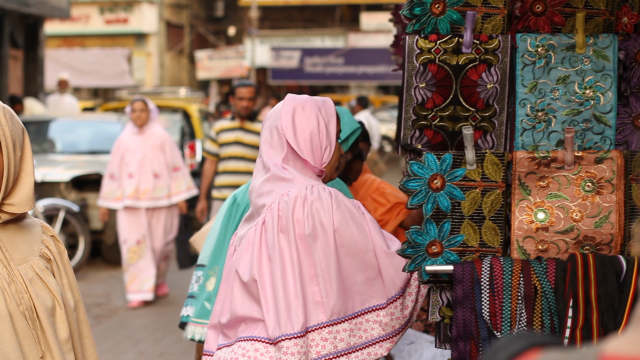By Fatema Kakal
(This is Part I in a series about female genital cutting within the Bohra community. Read Part II here)
The Bohra Muslims, who have the reputation of being modern and progressive, secretly practice khatna, or female genital mutilation/cutting (FGM/C) within India, as well as in other parts of the world. I learned about this over dinner with my family when I was 17. A woman who went by the pseudonym of Tasleem had recently filed the first public petition asking the Syedna (High Priest/religious leader of the Bohra community) to stop practicing khatna. While it shocked me, it also left me intrigued, wondering why this community continues such a harmful practice. A few years later, as I was pursuing my postgraduate degree, I had the opportunity to answer the questions that my 17-year-old self had. For my Masters dissertation, I decided to use a new lens to understand the community better, and get a deeper insight into what could be the factors influencing the Bohras to continue khatna.
As I worked on my research, I read about FGM/C – a lot. I also read about the Bohra community from an ethnographic lens. I reviewed literature, debates and discourses, narratives of survivors, and conducted interviews with activists working to end FGM/C (from Sahiyo and other organisations).
I used French social theorist Michel Foucault’s concepts of sexuality, biopower and pastoral power to understand FGM/C. Religion and religious power can often be political, and can be woven through various forms, like the sensual, corporeal and the imaginary. Religious leaders are crucial here, who are defined by their status within religion. Thus, religious leaders have pastoral power where they lead, supervise and guide people. Pastoral power operates through the body, forming a locus for biopower, a form of control over people’s bodies. Religion uses sexuality as a mechanism for control, discipline and policing bodies. FGM/C then, is a practice used by religious leaders to control women and children’s bodies and sexuality.

I used Tammary Esho’s framework of FGM/C as a socio-cultural-symbolic nexus. Esho has conduced extensive research on FGM/C and sexual and reproductive health and rights. It is a culturally mediated process of socialization, that transfuses gendered identity. Khatna is a cultural practice passed down through generations to socialize girls into the community. The pain felt during the cutting is considered a rite of passage and is symbolic of fertility and womanhood. It is meant to define a woman and her femininity, and her identity as a Bohra woman.
To understand how these concepts actually applied to khatna and the Bohra community, I analysed narratives of survivors collected and shared by Sahiyo and We Speak Out in their reports, and Goswami’s documentary A Pinch of Skin, I found a few overarching themes within their stories. Khatna was seen as a religious and traditional practice, and was considered to be a tool to control women’s sexuality, and maintain morality. Most of the survivors’ experiences involved traditional cutting by a dai or a midwife, in unhygienic conditions; where mothers and other women in the family played a vital role. It was a highly secretive and taboo practice, but normalized and obligatory, and passed down through generations. Many women claimed to feel anger and shame, remembered it being painful, and asserted it affected their sexual lives, and crucially, being a traumatic event in their lives.
I interviewed activists as key informants who highlighted that the silence around khatna was breaking – with Tasleem’s petition in 2012, and the arrests in the United States and Australia. Religious leaders also began addressing it through sermons and letters issued to community members. The public interest litigation in the Indian Supreme Court in 2017 and the growing anti-FGM/C movement rising from within the community were important for people to hear different voices around khatna. This in turn, led to a shift in the rationale for the practice. While it was earlier believed that it controls women’s sexuality, the Bohra clergy was increasingly scrutinized for controlling women’s bodies. The clergy changed the justification behind the practice, by claiming it is a religious practice and a marker of Bohra identity.
The growing anti-khatna movement was also considered an attack by Westernization. Thus, continuing khatna became a statement defying Western notions of appropriate religious customs and traditions. The Bohra clergy encourages people to visit medical professionals to have their daughters cut safely, promoting medicalisation. Medical facilities are increasingly accessible for people in the Bohra community, especially in big cities, who claim to do the cutting in a safer, hygienic way, thus perceived to be potentially minimizing risk and trauma.
The Bohra clergy is an important agent in the continuation of khatna. People’s lives are heavily influenced by the Syedna and the clergy due to their pastoral power over the community. They are deeply involved in people’s lives, and their pastoral power has political power. Khatna is a form of control over girls’ bodies and sexuality, which is considered aberrant. Thus, the clergy enforces biopower through khatna, to ensure women uphold values of fidelity and morality. People in the community however, look at khatna at a socio-cultural-symbolic nexus. Khatna is significant for forming a girl’s identity as a Bohra woman, and has cultural and symbolic significance as a rite of passage. Women are bearers of culture, and it is a tradition passed down through generations.
Thus, khatna continues to be practiced in the Bohra community, due to social, cultural and religious norms of womanhood, purity and sexuality. The clergy has significant influence over the community and the family. Law can play a crucial role in discouraging people from continuing khatna. Thus, in order to end the practice, it is important to engage the various stakeholders in the community who protect the practice, especially women who are often primary decision-makers for children to undergo khatna.

